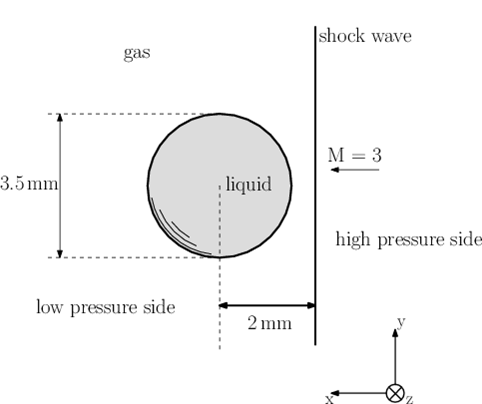Investigation of the aerobreakup of a liquid droplet at high Weber number with different turbulence models
In this work the computational fluid dynamics (CFD) simulation results in a high velocity multiphase flow are presented, where the predominantly turbulent phase is the gaseous phase. Here, the deformation of an initially spherical liquid droplet due to an incident shock wave (M=3) is being investigated.
Until now most investigation of such processes did not include an explicit turbulence modeling implying direct numerical simulation of turbulence phenomena. Here, the role of the subgrid-scale turbulence is investigated for the mentioned class of fluid-dynamic flows with different LES models (Large Eddy Simulation) implemented in the open source CFD library OpenFOAM®. A specially assembled multiphase solver for supersonic flows was used to ensure compressibility in both phases. It was validated experimentally in a separate work for transonic and M~1 flows. Here, simulation results are compared to experiments of droplet breakup at high Weber number from literature [Theofanus, T.G. and Li, G.J. (2008), “On the Physics of Aerobreakup”. Phys Fluids, Vol. 20, 052103.].

Initial flow setup
Turbulence modeling seems to be an important factor for the characteristic shape of the droplet during breakup at the given conditions. For some models good agreement with experiments can be found, however, the lack of features of some of the other models show additional insight into the phenomena responsible for the characteristic shape of the droplet after the initial stage of the breakup process.


